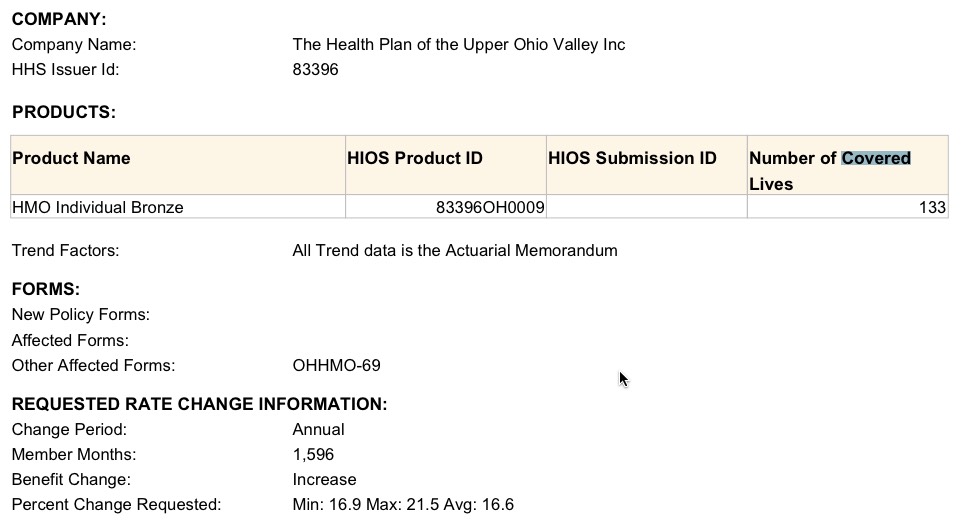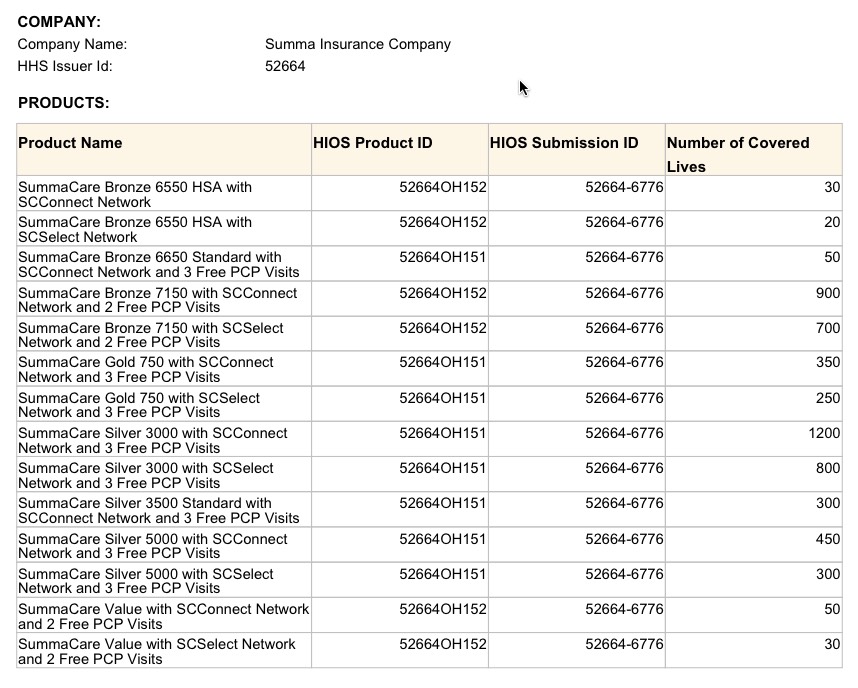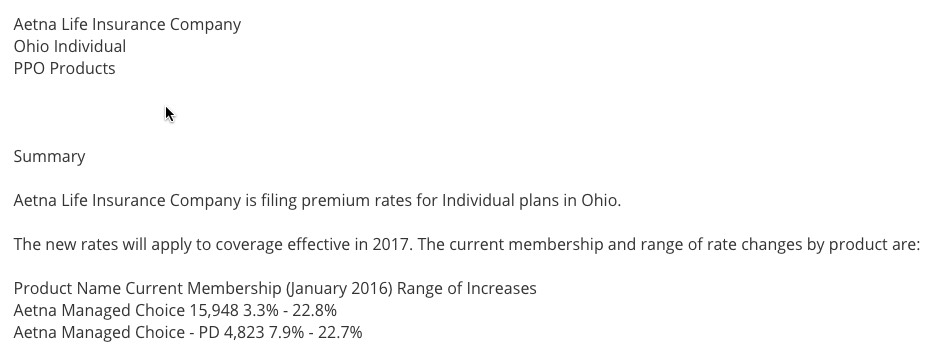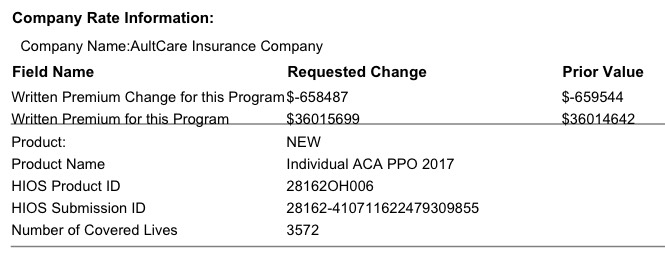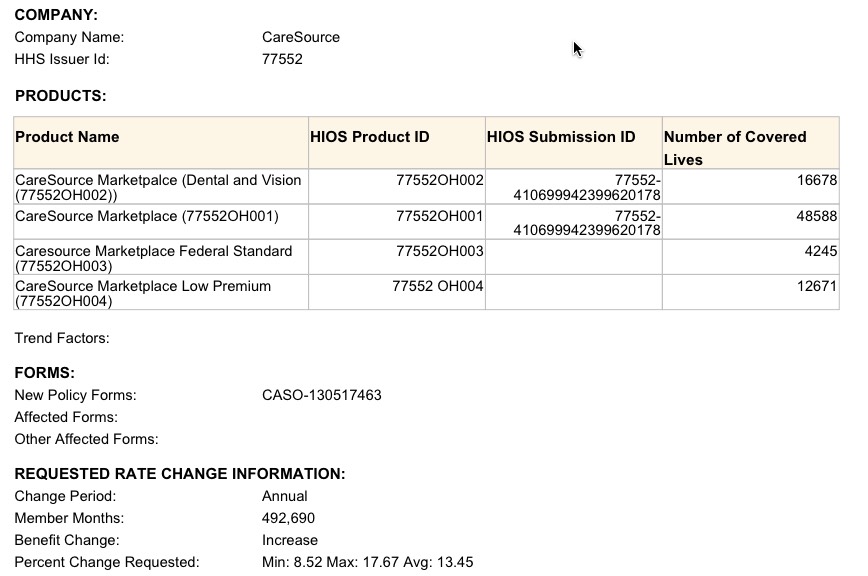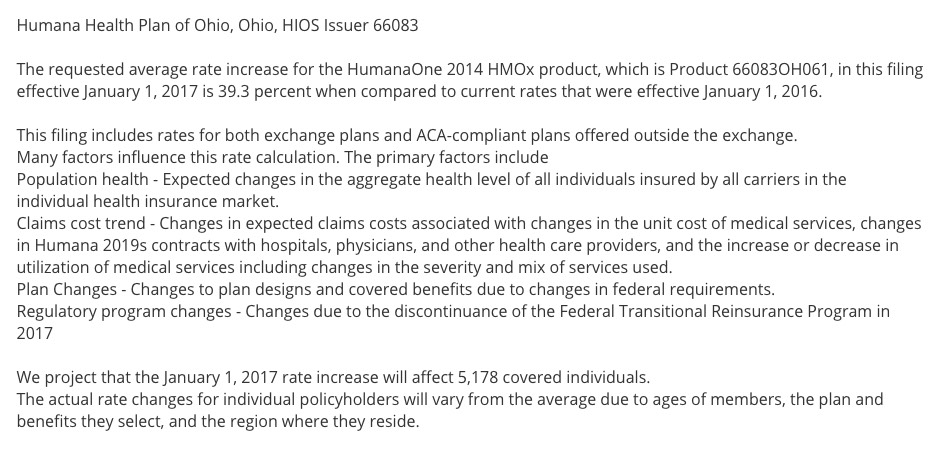2017 Rate Request Early Look: Ohio
Here's some relatively good news! Ohio's 2017 requested rate filings have finally been published, and considering that some other states are looking at weighted average requested increases of 30%, 40% or even as high as 56%, Ohio's 13.1% average is actually refreshingly low by 2017 standards.
It's actually even better than that, because as you can see below, I haven't been able to track down the actual current membership number for "Buckeye Community Health" (aka Ambetter)...and Buckeye is asking to lower their rates slightly, by around 1% on average. To get an idea of how this could impact the statewide average:
- Assuming 0 enrollees: No impact at all; 13.1% average.
- Assuming 10,000 enrollees: Would reduce avg. to 12.4%
- Assuming 50,000 enrollees: Would reduce avg. to 10.1%
- Assuming 100,000 enrollees: Would reduce avg. to 8.1%
Again, without knowing how many people Buckeye/Ambetter actually has currently enrolled, it's impossible to say what the weighted statewide average is...but I can say that it's no more than 13.1%.
When you include the 22,000 people enrolled in Ohio's now-defunct InHealth Co-Op who'll have to shop around, I've accounted for around 200,000 on the Ohio individual market. Ohio's indy market was roughly 380,000 as of 2014, and has likely grown to around 475,000 by now (244,000 enrolled via the ACA exchange this year, and that doesn't include off-exchange enrollees), so there's obviously a lot of people unaccounted for here. Many of the missing enrollees are likely signed up via UnitedHealthcare, which is leaving the Ohio market (as well as Buckeye). Unfortunately, I don't know how many people are enrolled in UnitedHealthcare plans either.
In any event, 13.1% is the maximum weighted average hike requested by Ohio carriers:



